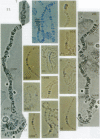Abstract
We have microdissected divisions of the Anopheles gambiae polytene chromosomes, digested the DNAs with a restriction enzyme, and PCR-amplified the DNA fragments to generate a set of pooled probes, each corresponding to approximately 2% of the mosquito genome. These divisional probes were shown to have high complexity. Except for those derived from near the centromeres, they hybridize specifically with their chromosomal sites of origin. Thus, they can be used to map cloned DNAs by a dot blot procedure, which is much more convenient than in situ hybridization to polytene chromosomes. We discuss additional potential uses of these probes, such as easier isolation of molecular markers and genes, including those that cross-hybridize with clones available from other insects. It is expected that the probes will substantially accelerate molecular genetic analysis of this most important malaria vector.
Full text
PDF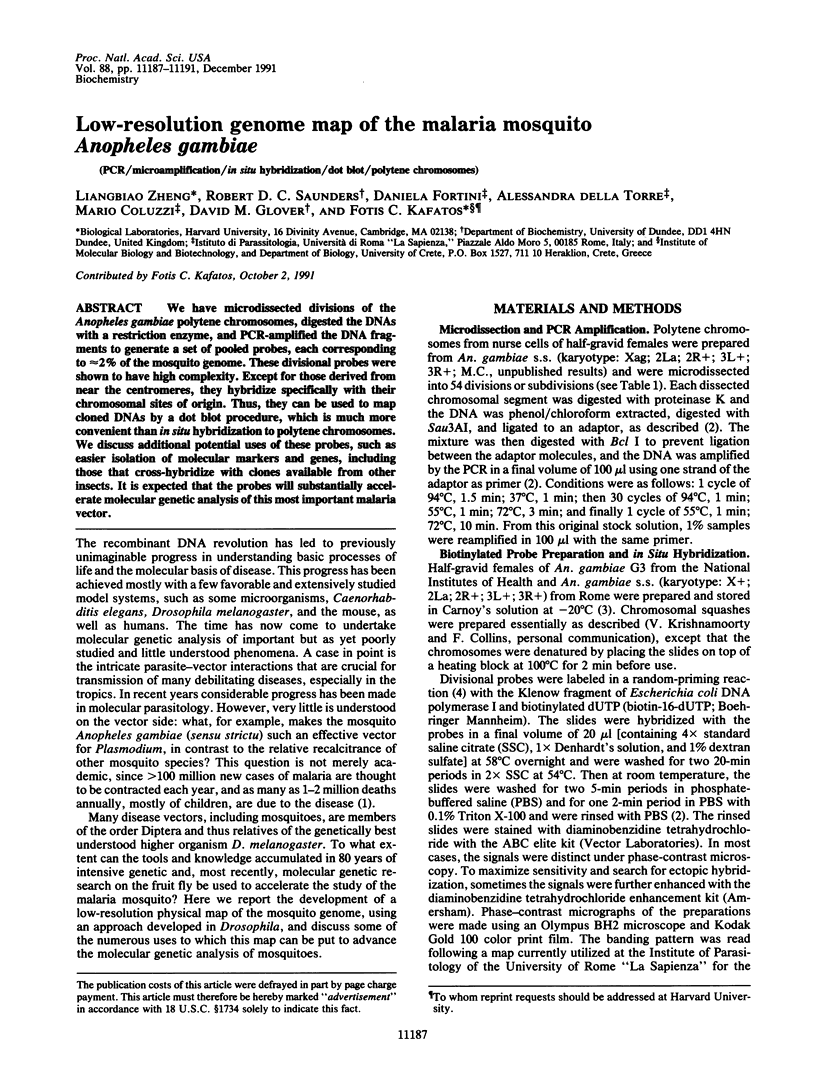
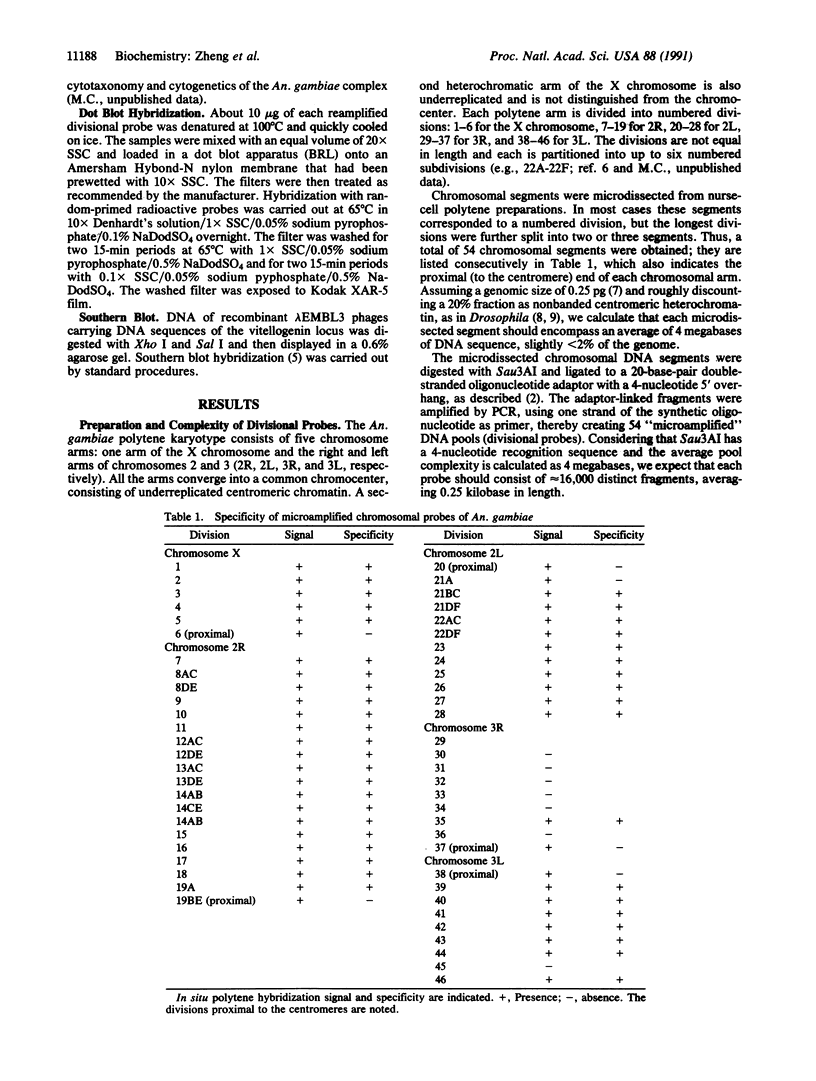
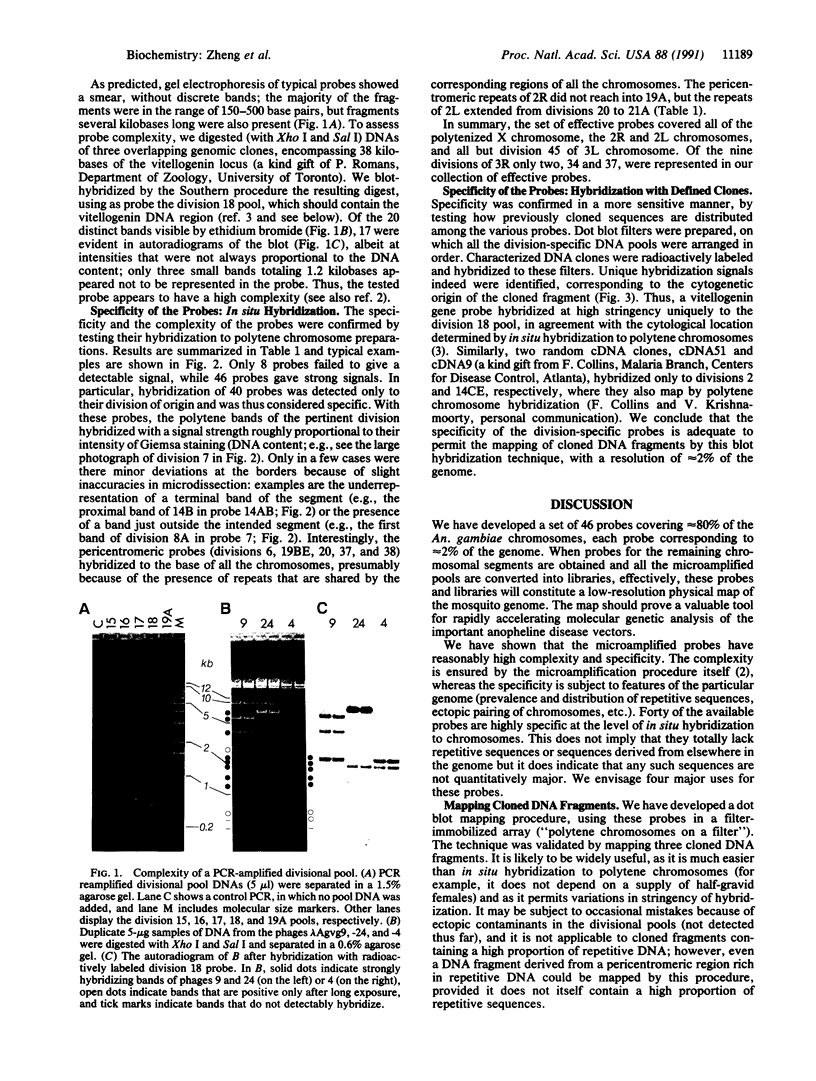
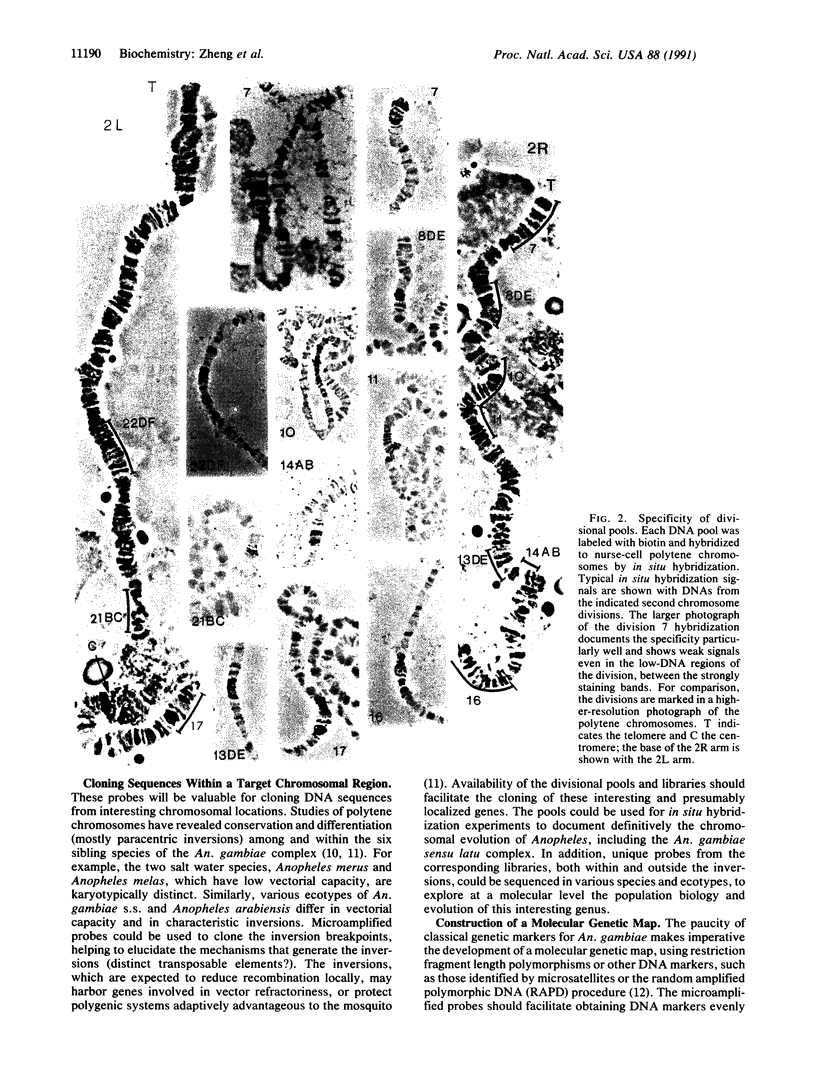
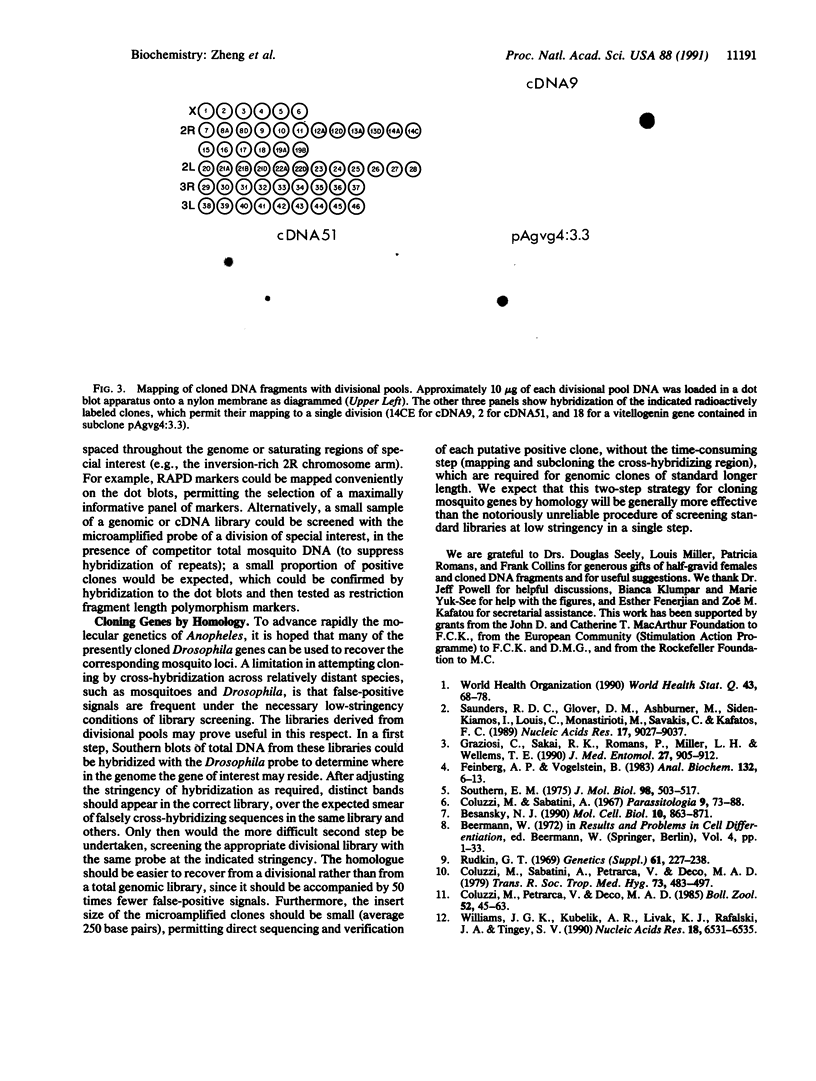
Images in this article
Selected References
These references are in PubMed. This may not be the complete list of references from this article.
- Besansky N. J. A retrotransposable element from the mosquito Anopheles gambiae . Mol Cell Biol. 1990 Mar;10(3):863–871. doi: 10.1128/mcb.10.3.863. [DOI] [PMC free article] [PubMed] [Google Scholar]
- Coluzzi M., Sabatini A., Petrarca V., Di Deco M. A. Chromosomal differentiation and adaptation to human environments in the Anopheles gambiae complex. Trans R Soc Trop Med Hyg. 1979;73(5):483–497. doi: 10.1016/0035-9203(79)90036-1. [DOI] [PubMed] [Google Scholar]
- Feinberg A. P., Vogelstein B. A technique for radiolabeling DNA restriction endonuclease fragments to high specific activity. Anal Biochem. 1983 Jul 1;132(1):6–13. doi: 10.1016/0003-2697(83)90418-9. [DOI] [PubMed] [Google Scholar]
- Graziosi C., Sakai R. K., Romans P., Miller L. H., Wellems T. E. Method for in situ hybridization to polytene chromosomes from ovarian nurse cells of Anopheles gambiae (Diptera: Culicidae). J Med Entomol. 1990 Sep;27(5):905–912. doi: 10.1093/jmedent/27.5.905. [DOI] [PubMed] [Google Scholar]
- Rudkin G. T. Non replicating DNA in Drosophila. Genetics. 1969;61(1 Suppl):227–238. [PubMed] [Google Scholar]
- Saunders R. D., Glover D. M., Ashburner M., Siden-Kiamos I., Louis C., Monastirioti M., Savakis C., Kafatos F. PCR amplification of DNA microdissected from a single polytene chromosome band: a comparison with conventional microcloning. Nucleic Acids Res. 1989 Nov 25;17(22):9027–9037. doi: 10.1093/nar/17.22.9027. [DOI] [PMC free article] [PubMed] [Google Scholar]
- Southern E. M. Detection of specific sequences among DNA fragments separated by gel electrophoresis. J Mol Biol. 1975 Nov 5;98(3):503–517. doi: 10.1016/s0022-2836(75)80083-0. [DOI] [PubMed] [Google Scholar]
- Williams J. G., Kubelik A. R., Livak K. J., Rafalski J. A., Tingey S. V. DNA polymorphisms amplified by arbitrary primers are useful as genetic markers. Nucleic Acids Res. 1990 Nov 25;18(22):6531–6535. doi: 10.1093/nar/18.22.6531. [DOI] [PMC free article] [PubMed] [Google Scholar]




